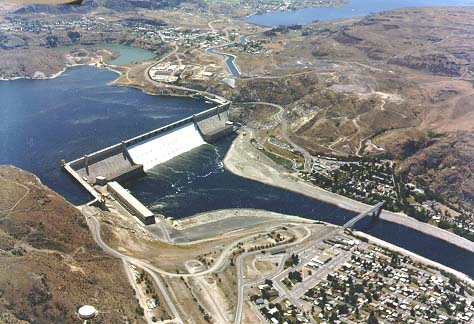forum
library
tutorial
contact

Federal Agencies to
Host Scoping Meetings
by Staff
Tribal Tribune, October 28, 2016
|
the film forum library tutorial contact |

|
Federal Agencies to
by Staff
|
Upcoming EIS to define how federal agenices operate and maintain
14 Columbia basin dams, including Grand Coulee and Chief Joseph
 A public letter from U.S. Army Corps of Engineers Northwestern Division Director of Programs David J. Ponganis has called for public involvement at scoping meetings that will help define issues, concerns and the scope of alternatives to be addressed in an upcoming Environmental Impact Statement on the long-term operation and maintenance of the Columbia River System.
A public letter from U.S. Army Corps of Engineers Northwestern Division Director of Programs David J. Ponganis has called for public involvement at scoping meetings that will help define issues, concerns and the scope of alternatives to be addressed in an upcoming Environmental Impact Statement on the long-term operation and maintenance of the Columbia River System.
The letter, dated September 30, 2016, was shared with the Tribune this week.
Public meetings will be held weekly through January 17, 2017.
Meetings were held in Wenatchee and Coulee Dam last week.
"During the preparation of the EIS, the agencies will be identifying potential alternatives that best meet our responsibilities for providing for authorized purposes while minimizing or eliminating environmental impacts and meeting all federal statutory and regulatory requirements," reads the letter from Ponganis.
"The agencies plan to identify a preferred alternative in the draft EIS. The agencies will evaluate a range of alternatives in the EIS, including a no-action alternative (current system operations and configuration)."
According to the letter, the Corps, Northwest Division, Bonneville Power Administration and Bureau of Reclamation will serve as co-leads in preparing the upcoming EIS under the federal National Environmental Policy Act on Columbia River System operations and configured for 14 federal projects in the Columbia basin.
The EIS will evaluate and update the agencies' approaches concernings flood risk management, navigation, hydropower, irrigation, fish and wildlife conservation, recreation, and municipal and industrial water supply.
The agencies are also expected to analyze potential effects on species, including those listed under the Endangered Species Act, cultural resources, tribal resources, and other social and natural resources.
"The EIS will also identify measures to avoid, offset, or minimize impacts to resources affected by system operations and configuration, where feasible. For instance, non-operational mitigation measures to address impacts to the fish resources, such as habitat actions in the tributaries and estuary, avian predation management actions, and conservation and safety net hatcheries, may be proposed."
The EIS will include 14 federal dams and facilities in Idaho, Montana, Oregon and Washington, including Grand Coulee and Chief Joseph dams on the Colville Indian Reservation.
Along with Chief Joseph, other dams under the Corps maintains include Libby, Albeni Falls, Dworshak, Lower Granite, Little Goose, Lower Monumental, Ice Harbor, McNary, John Day, The Dalles and Bonneville.
Along with Grand Coulee, Reclamation maintains Hungry Horse Dam.
BPA is responsible for marketing and transmitting power generated by the dams.
Upcoming meetings
For those that cannot participate in person, an online webinar will be provided to interested parties. The webinar will cover the material discussed in the in-person public scoping meetings. Detailed instructions on how to participate in the webinar may be found on the project website at www.crso.info.
learn more on topics covered in the film
see the video
read the script
learn the songs
discussion forum
